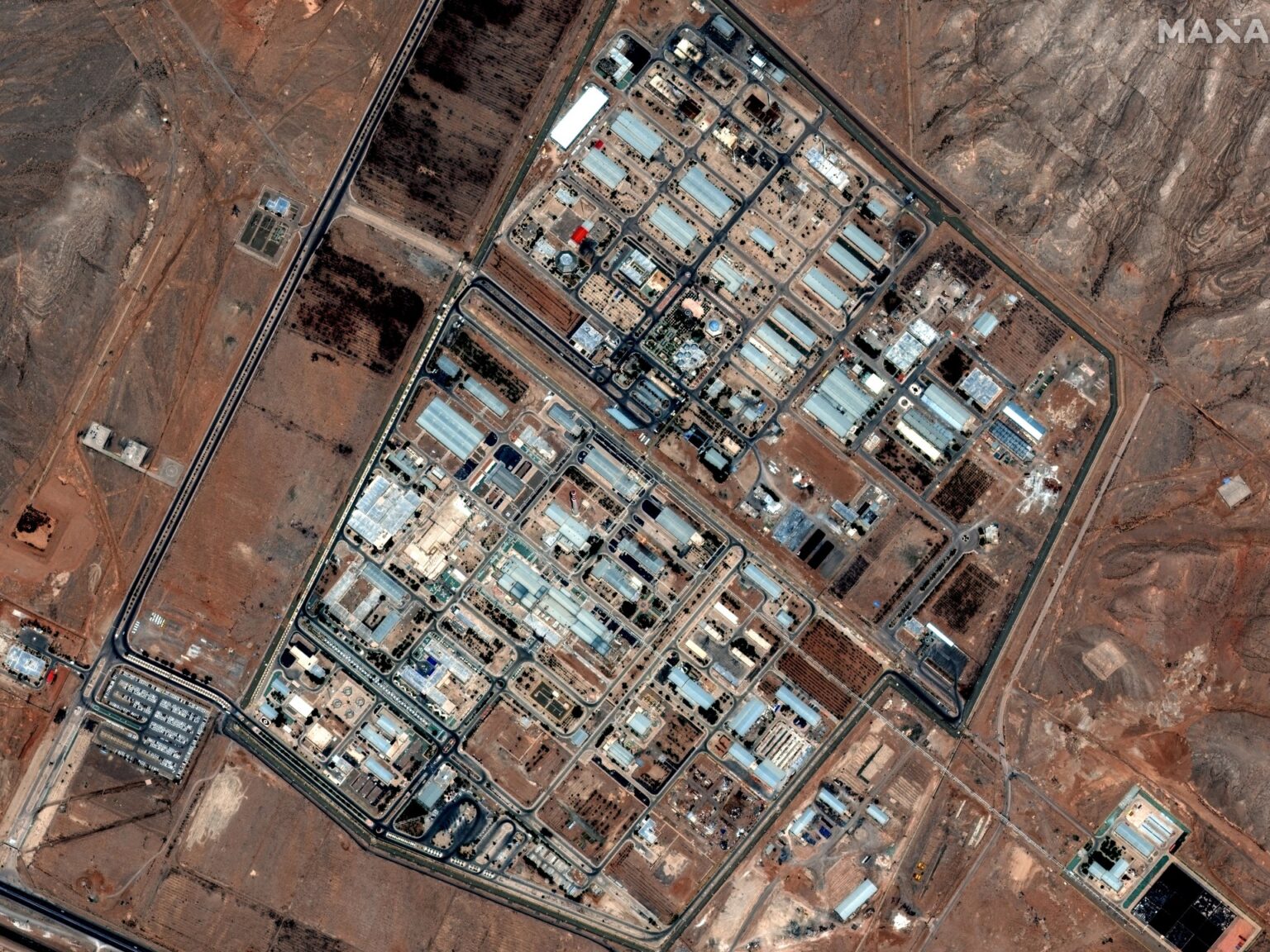A key nuclear site in Iran’s Isfahan province has come under Israeli attack, with local officials saying there were no radiation leaks.
Early on Saturday, smoke could be seen rising from an area near a mountain in the city of Isfahan after Israeli air strikes hit the nuclear site overnight, triggering the air defence system.
It was the second attack on Isfahan as the conflict between the Middle Eastern nations entered a second week, killing at least 430 people and wounding nearly 3,500 others in Iran, according to Iran’s health ministry.

No casualties were reported in the Isfahan attack, authorities said.
Israel’s army released video and photos it says shows an attack on the Isfahan nuclear facility.
“This is what the nuclear facility in Isfahan looks like, which is used to convert uranium, which is the stage that follows the enrichment stage on the way to producing nuclear weapons,” said army spokesman Avichay Adraee in a post.
“The air force struck the central facility along with buildings used to produce centrifuges. We continue to strike the Iranian nuclear project.”
#صور هكذا تبدو المنشأة النووية في أصفهان والتي تستخدم لتحويل اليورانيوم وهي المرحلة التي تلي مرحلة التخصيب في طريق انتاج السلاح النووي.
لقد ضرب سلاح الجو المنشأة المركزية إلى جانب مباني استخدمت لانتاج أجهزة الطرد المركزي.
نواصل ضرب المشروع النووي الإيراني pic.twitter.com/cOt3BqSA3l
— افيخاي ادرعي (@AvichayAdraee) June 21, 2025
Iran’s Deputy Health Minister Ali Jafarian says the department is preparing to treat any victims suffering from the effects of Israel’s continuing attacks on nuclear facilities.
“We have not yet received reports of Israel using unconventional weapons. We are prepared to deal with any nuclear leak in the event that nuclear reactors are targeted, and we hope we do not reach that stage,” said Jafarian.
Israeli forces also hit a military installation in the southern Iranian city of Shiraz in Fars province, according to Iranian media.
On the Israeli side, explosions were heard above Tel Aviv, where buildings were seen on fire.
In central Israel, the emergency services released images showing fire on the roof of a multi-storeyed residential building. Local media reports said the blaze was caused by falling debris from an Iranian missile that was intercepted.
At least 24 people have been killed by Iranian missile attacks in Israel, according to local authorities, in the worst conflict between the longtime enemies.
Meanwhile, Israeli Defence Minister Israel Katz said on Saturday that Israel has killed Saeed Izadi, who led the Palestine Corps of the Quds Force, the Iranian Islamic Revolutionary Guards Corps’ (IRGC) overseas arm, in a strike on an apartment in the Iranian city of Qom.
Calling his killing a “major achievement for Israeli intelligence and the Air Force”, Katz said in a statement that Izadi had allegedly financed and armed the Palestinian group Hamas ahead of its October 7, 2023, attack on Israel.
IRGC said five of its members died in Israeli attacks, according to Iranian media. They did not mention Izadi, who was on United States and British sanctions lists.
Hostilities broke out on June 13 when Israel launched air strikes on several sites across Iran, including military and nuclear facilities, prompting Tehran to launch retaliatory strikes.
Israel claims it attacked Iran to prevent it from developing a nuclear bomb, although Iranian negotiators were engaged in talks with the US to curb its enrichment programme in exchange for sanctions relief.
The International Atomic Energy Agency and US intelligence have both said there were no signs that Iran was building a nuclear weapon, despite Tehran having enriched uranium beyond the threshold needed for civilian purposes.
However, Trump on Friday said US intelligence chief Tulsi Gabbard was “wrong” in saying that Iran was not developing a nuclear bomb.
Iranian government spokesperson Fatemeh Mohajerani told Al Jazeera that Tehran remains open to dialogue at the United Nations and other such forums.
“We believe in listening to the other side. That’s why our diplomats are present in Geneva, to hear the other side out,” Mohajerani said, adding that any diplomacy must begin with global recognition of Israel’s attack on Iran.
Al Jazeera’s Tohid Asadi, reporting from Tehran, said Iranians are angry over Israel “not just targeting nuclear facilities and military complexes”.
“The reality on the ground is ordinary people are being attacked on a daily basis,” he said.
“Many in the Iranian capital have chosen to leave, but we have to keep in mind we’re talking about 10 million people living in Tehran city and 14 million in Tehran province. It’s putting pressure on surrounding areas.”
https://www.aljazeera.com/news/2025/6/21/israel-strikes-irans-isfahan-nuclear-site-buildings-on-fire-in-tel-aviv?traffic_source=rss


